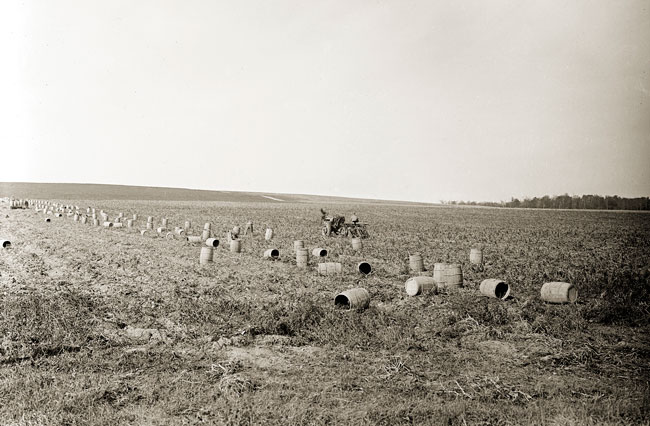B A C K T H E N
Caribou Potato Harvest
This photo of digging potatoes with a tractor-drawn two-row digger likely dates from around 1940. While the long hours of sunlight early in the season promoted rapid growth, the early arrival of cold weather made prompt harvesting essential, and thus the vines were killed prematurely with a chemical spray.
The short growing season also hindered the seeding of cover crops, leaving the soil unprotected from erosion. The replacement of horses by tractors also reduced cover cropping, as did high potato prices during wartime.
In 1939, Maine—which is to say, primarily Aroostook—despite a poor crop, led all states in total yield, yield per acre, and production of certified seed. In Aroostook 5,003 farms grew nearly 29 million bushels of potatoes. Fort Fairfield, Caribou, and Presque Isle were the leading towns. Most of the crop was sold as table stock, with prices determined by production in other states. As a result, every year was a gamble, as farmers borrowed heavily in hopes of a boom to pay off the debts left by the busts.
Maine’s potato production peaked in the late 1940s; today the acreage in potatoes is comparable to that of the 1880s. The yield per acre, however, is the highest ever, indicating that today’s farmers are very good at what they do.
The picking crew will pick into ash baskets made locally by Maine Indians who traveled to meet the demand. The baskets will be dumped into the cedar barrels, which are made by Aroostook cooperages.
Text by William H. Bunting from Maine On Glass. Published by Tilbury House Publishers, 12 Starr St., Thomaston, Maine. 800-582-1899.
Maine On Glass and prints of the photographs are available through the Penobscot Marine Museum: PenobscotMarineMuseum.org.

